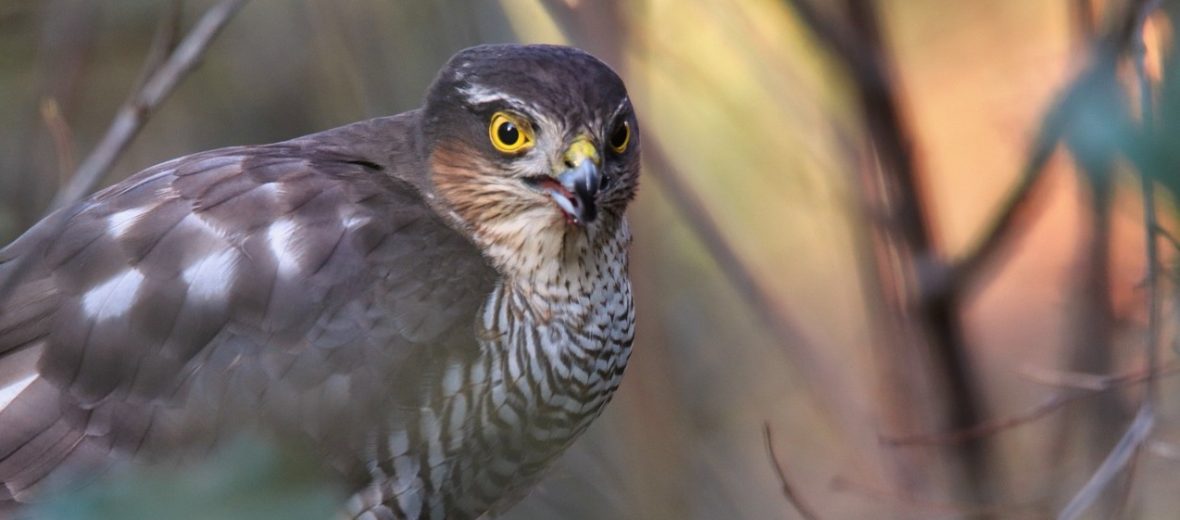
The Eurasian sparrowhawk, aka northern sparrowhawk or just sparrowhawk, can be found throughout Europe, Asia, and into Africa. They can dwell amongst a variety of woodland types; open countrysides, with a smattering of trees; parks; gardens; and even urban areas, as long as they have the protection of trees. Although they face the threats of habitat destruction, fire suppression, and pollution throughout their range, they have a strong population of an estimated 3,200,000 wild individuals and are thus listed as Least Concern by the IUCN.
First the Stats…
Scientific name: Accipiter nisus
Weight: Up to 7.8 ounces
Length: Up to 16 inches
Wingspan: Up to 25 inches
Lifespan: Up to 20 years
Now on to the Facts!
1.) Eurasian sparrowhawks can be found living a solitary life or with a partner.
2.) They hunt via means of surprise attacks. While hiding within the cover of flora (plants) or within man-made structures, they lay in wait until a prey animal approaches, then they break cover and the chase ensues.
3.) Sometimes these birds of prey will even hunt on foot, if the need arises.
4.) These birds have been known to fly up to 2 miles a day in search of food.
5.) A group of sparrowhawks is called an aerie, boil, brace, brood, lease, mews, schizophrenia, swooping, tower, and other names; of which there are quite a few!
But wait, there’s more on the Eurasian sparrowhawk!
6.) Female sparrowhawks hunt mainly starlings and thrushes. While males hunt primarily buntings, finches, sparrows, and tits. But these predators are able to take prey as large as 18+ ounces too. They also prey on insects, mice, rats, voles, moles, and gophers, to name a few.
7.) Eurasian sparrowhawks are monogamous (mate for life).
Did you know…?
Sparrowhawks can fly up to 40 mph, and they can dive up to 120 mph.
8.) Even though conifer trees are the preferred nesting site, they can adapt to other trees and even man-made structures.
9.) A new nest is constructed each breeding season.
10.) The nest is built from loose twigs & bark chips, and can measure up to 2 feet in diameter.
But wait, there’s still more on the Eurasian sparrowhawk!
11.) Females lay up to 5 eggs that hatch in up to 33 days.
12.) 30 days after hatching, the chicks become independent.
13.) Even though they are challenging to train, falconers have utilized these birds of prey since around the 16th century.
14.) Eurasian sparrowhawks have been blamed for declines in populations of passerine birds and are known to hunt pigeons and even chickens.
Now a Short Eurasian Sparrowhawk Video!
Be sure to share & comment below! Also, check out the Critter Science YouTube channel. Videos added regularly!
Want to suggest a critter for me to write about? Let me know here.
Think you know a lot about critters? Try your hand at these fun, free quizzes:



